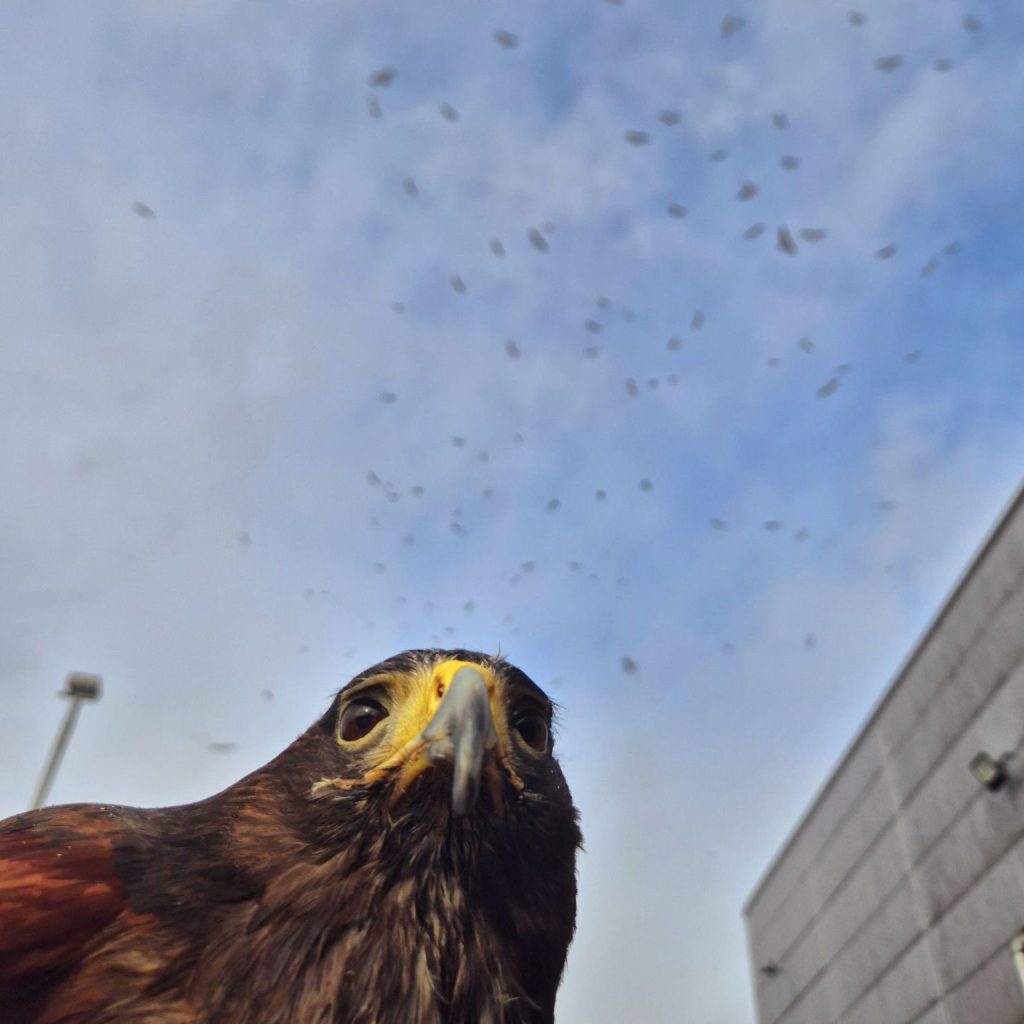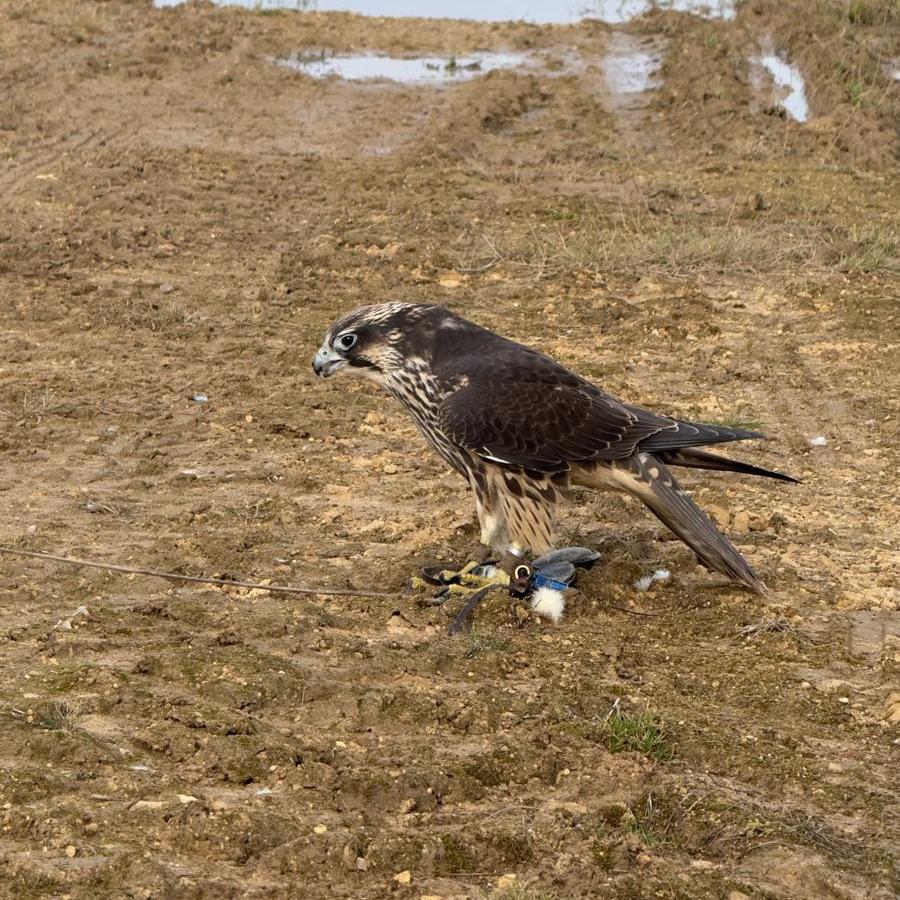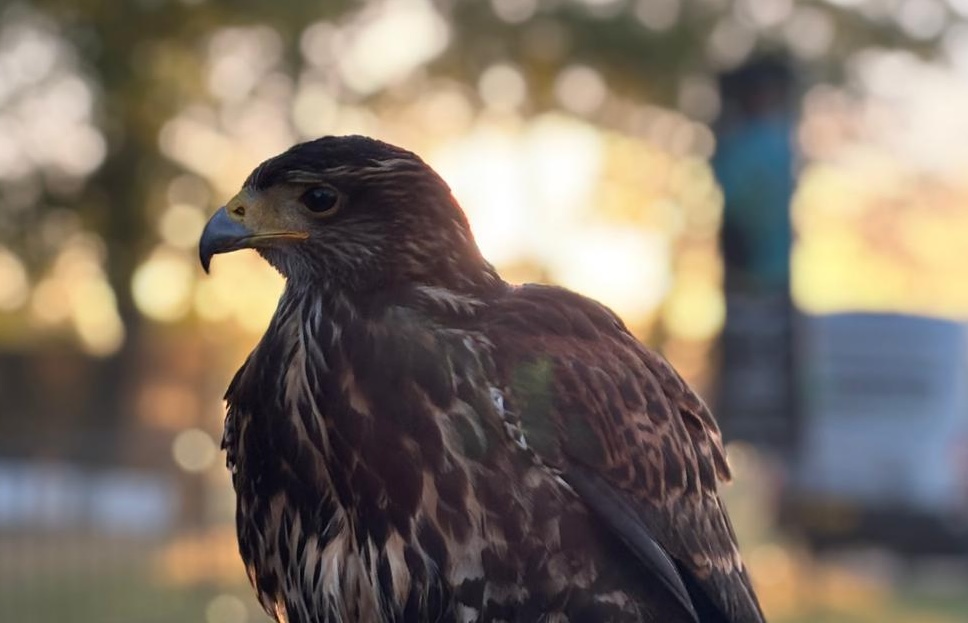Falconry is a spectacular practice that has been used for centuries for sport and hunting. Today, falconry centres across the UK use birds of prey for educational purposes.
That’s not their only use. Today, many pest control companies practice falconry as a natural solution to deter nuisance birds.
As an experienced provider of falconry bird control, LPPC Environmental understands the importance of this ancient art and has put together this handy guide.
Why Falconry Is An Effective Form Of Bird Control
Falconry is an ideal solution for bird control on a large scale, as it is natural, humane and effective. Birds are naturally territorial, and prey species, such as pigeons, starlings, ducks and geese, will naturally avoid areas that they believe are inhabited by a bird of prey.
As such, by regularly flying hawks, falcons or other birds of prey in a specific area, you can scare off pest birds and stop them from building nests in the area. Trained birds of prey can be used by falconers to fly over problem areas and deter other birds without harming them or causing damage to the environment.
Keeping nuisance birds out of your site is key because wild birds, like birds of prey, are protected by the Wildlife and Countryside Act 1981 and cannot be disturbed, harmed or killed. Their nests and eggs also can’t be removed or harmed, so during the breeding season, you will find it hard to remove birds that have already built nests on your property.
This can be incredibly irritating for many project managers, particularly those running construction sites, transport hubs and sporting arenas. Birds could hold up projects, cause damage to equipment and generally make the space feel unsafe and unwelcoming.
Therefore, deterring birds using falconry is an ideal solution that will safely and naturally keep nuisance birds away from your site without disturbing its daily activities.

A Brief History Of Falconry
Falconry is a traditional practice thought to date back to ancient times. It was thought to have originated in Mesopotamia, which is now Iraq, in approximately 2,000 BC before being introduced to Western Europe in around 400 AD.
The practice spread worldwide, and there are references to falconers globally throughout history. From Japanese warlords to English Kings, some of the greatest rulers and thinkers in the world have used falconry over the years as a sport. Game hawking became particularly popular in Central Asia and the Middle East, but it soon spread worldwide.
In the UK, falconry was used by both the upper and lower classes for centuries, both for fun and to find food. In fact, the Goshawk was nicknamed ‘the cook’s bird’ due to its skill at capturing prey that could then be eaten by hunters or sold at markets.
With falconry a popular sport, the Old Hawking Club was launched in 1864 and was succeeded by the British Falconers’ Club in 1927. The BFC is still active today.
During this time, hawks and falcons were taken from the wild and tamed, but as some birds, such as peregrine falcons, became endangered species as a result of this practice, new laws were put in place.
The Protection Of Wild Birds Act 1967 was the first law to stop the disturbance of nests and restrict those who could ring the legs of wild birds. This was a precursor for the Wildlife And Countryside Act 1981, which prohibits taking any wild bird of any species and led to the introduction of falconry licenses.
Today, you need to apply for a licence to use birds of prey for hunting from Natural England, and you also need a license to keep many species in captivity.
With wild birds now fully protected, modern falconers often import birds or breed them in captivity to ensure they continue to have a supply of birds of prey for pest control, hunting or sport.
Falconry today is becoming increasingly popular, particularly with its continued presence in popular culture. From the film Kes to the bestselling book H Is For Hawk, falconry remains in the public consciousness and is still something that people are fascinated by.
Bird Species Used In Falconry
Throughout the ages, many species have been used for falconry. Traditionally, birds such as the saker falcon and even eagles were used.
Trends in falconry birds have evolved over time, and today, one of the most popular species used in falconry is the Harris hawk.
Harris hawks are versatile birds of prey that are easy to train, making them the ideal choice for falconers of all abilities. Other birds used in falconry include red-tailed hawks, peregrine falcons, kestrels, merlins, and goshawks.
Many of these are native British birds that were raised in captivity, but some falconers use trained falcons imported from abroad, and there is a lively trade in falcons as the practice is still incredibly popular.
Some falconers, mainly in the US, even choose to use owls in falconry, although this is rare as owls are challenging to train and are highly food motivated, meaning they will only comply when hungry. They can quickly become full after eating as, unlike other birds of prey, owls don’t have a crop, and the food passes directly from their mouths to their stomachs.
The best falconry birds for each falconer depend on their purpose. Some birds are better suited to hunting small mammals and live quarry, while others will return for dead meat. Most falconers will have started training using a Harris hawk, but many choose another species of bird depending on their needs as they become more experienced.
Why LPPC Environmental Uses Falconry For Bird Control Across Aberdeen And Beyond
At LPPC Environmental, we’re firm believers that falconry is an ideal bird control solution for sites throughout Aberdeen, Scotland and the UK. Whether used alone or combined with other bird proofing techniques, such as bird netting or bird spikes, falconry can help keep birds away in the long term.
It is particularly useful for getting rid of ground nesting birds, which can cause major disruption to construction sites and other important infrastructure. The versatility of falconry means it can be used for protecting a site against everything from small birds to large pests such as pigeons, gulls and crows.
As leading UK specialists in falconry, we have falconers and trained birds ready and waiting across the country to help with your bird control problem.
If you’re interested in finding out how our falconry services could benefit your site and find out more about how much falconry costs, contact us today on 08000116100.




